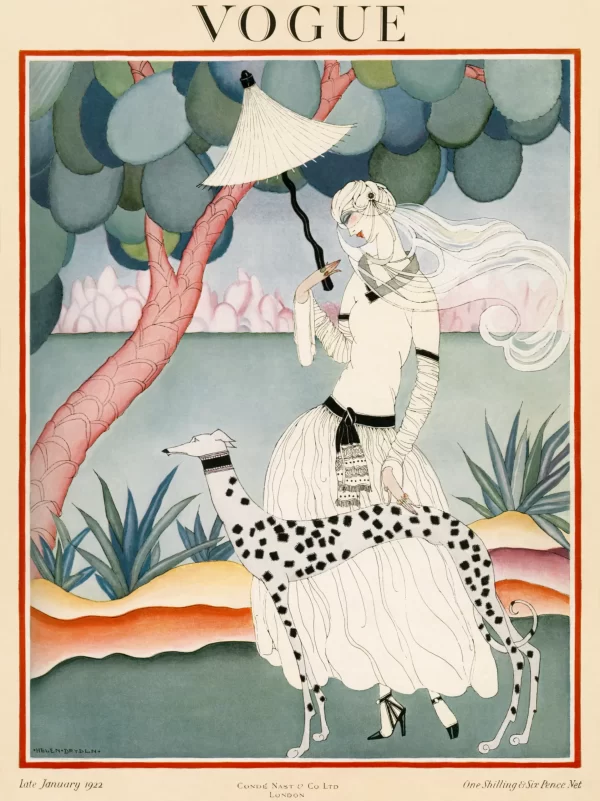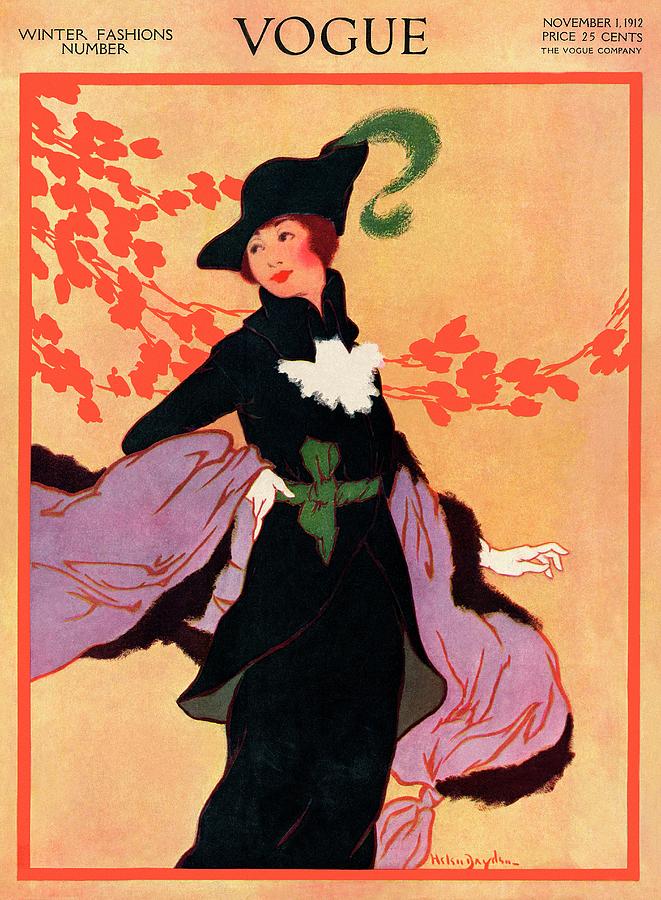
At the height of her success, she was the highest-paid woman artist in America, and given that it was the era following the Great Depression, making $100,000 a year was a staggering income.
You may have seen Helen Dryden’s work in movies or TV shows set during the Art Deco period, a genre she helped define. The illustrator, costume designer, and industrial designer was so influential that advertisements bragged, “It’s Styled by Helen Dryden,” showing her position as a household name and respected artist. She was commissioned to create murals and decorative artwork for public spaces that included Radio City Music Hall in New York City, the RCA Building (now the GE Building) in Rockefeller Center, and interior designs for the S.S. Normandie and S.S. America, both luxury ocean liners. Her sleek and modern aesthetic was also found in trains and airplanes, her impact on modern modes of transportation.
She worked as a designer for the Dura Company which made chrome faucets, as well as for Revere, the maker of kitchenware in aluminum, brass and copper. Dryden was also only woman to have invaded the man’s world of automobile production. The struggling automobile manufacturer, Studebaker, made the extraordinary decision to hire a woman to design their new model, and the experience lead to Dryden becoming one of the founders of the industrial design profession, an niche that had been dominated by men at the time.

Vogue cover, November 1, 1912, by Helen Dryden. It appears via public domain
Her output ranged from creating Japanese-style prints and children’s books, to theatrical costumes including the wardrobe for Irene and Vernon Castle in “Watch Your Step,” and the costumes for a Broadway production Claire de Lune starring Ethel and Lionel Barrymore. Her innovative designs impacted textiles, wallpapers, ceramics, upholstery, and glassware – objects and interiors characterized by bold lines and geometric shapes.
Dryden served as Art Director for various advertising agencies and department stores, including Lord & Taylor. Her keen eye for design, and her ability to create visually compelling campaigns helped revolutionize advertising and marketing, as well as what women wore and how they saw themselves wearing it. Her fashion illustrations graced the covers of Vanity Fair and Harper’s Bazaar, her depictions of women in fashionable attire often accompanied by whimsical or surreal elements.
Indeed, for over a span of a dozen years, Helen Dryden’s covers for Vogue set traditional magazine cover design on its ear, and it was Helen Dryden who was responsible for putting the very first dog on the cover of Vogue Magazine, a Dalmatian on the shores of the Mediterranean for the magazine’s “Riviera” number as seen at the top. The cover is a nice example of the beautiful curves and strong sense of movement throughout Dryden’s work. The illustration is so “alive” that one can almost feel the wind blowing through the model’s veil, and the sudden energy of a Dalmatian that has noticed something of great interest.
In 1930, British Vogue wrote, “The next best thing to having the world at your feet is to have a dog at your heels.” Helen Dryden didn’t just agree, she quite literally illustratrated the sentiment with a magazine cover.
Click here to read more about this fascinating woman’s accomplishments.
